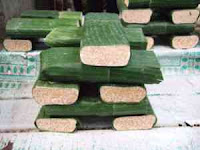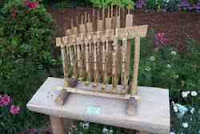Tempe
Tempe is made by a natural culturing and controlled fermentation process that binds soybeans into a cake form. It originated from Indonesia, invented by the Javanese, where it is most popular, although it is common in other parts of Southeast Asia as well, introduced by migrated Javanese. It is especially popular on the island of Java, where it is a staple source of protein.
Like tofu, tempeh is made from soybeans, but tempeh is a whole soybean product with different nutritional characteristics and textural qualities. Tempeh's fermentation process and its retention of the whole bean give it a higher content of protein, dietary fiber and vitamins compared to tofu, as well as firmer texture and stronger flavor. Tofu, however, has a higher concentration of protein per carbohydrates, and is thought to be more versatile in dishes.
Because of its nutritional value, tempeh is used worldwide in vegetarian cuisine; some consider it to be a meat analogue. Even long ago before people found and realized the rich nutrition fact of tempeh, tempeh was referred to as “Javanese meat.”






